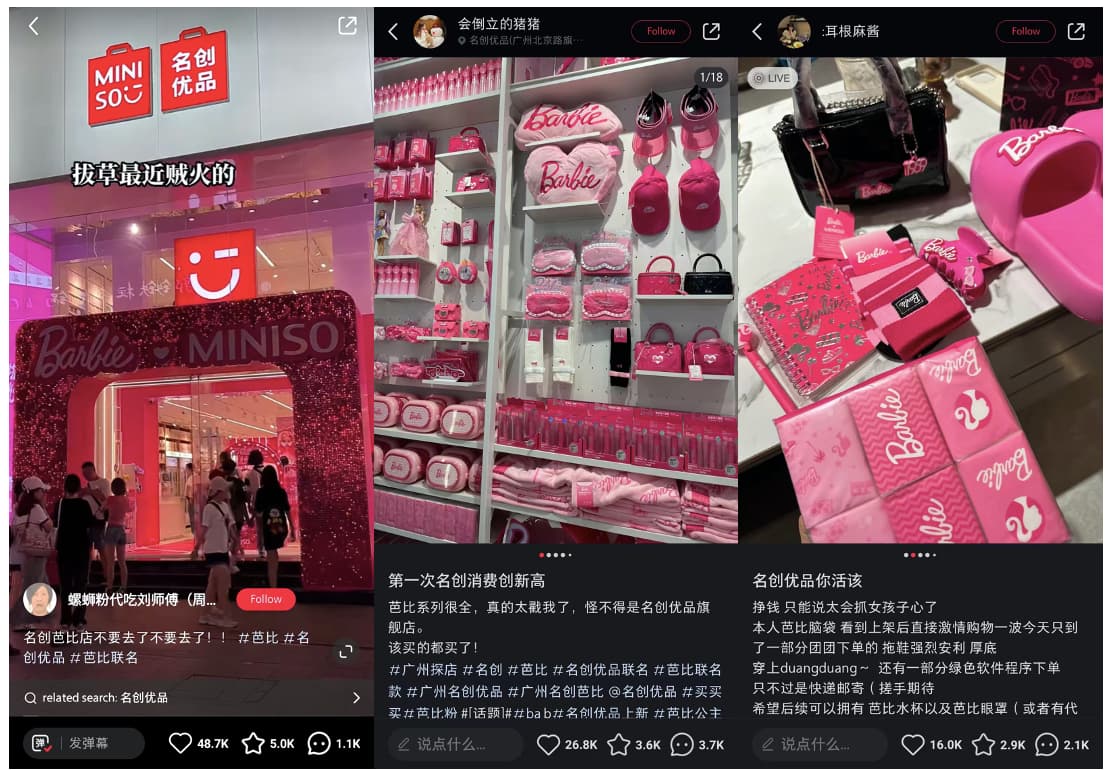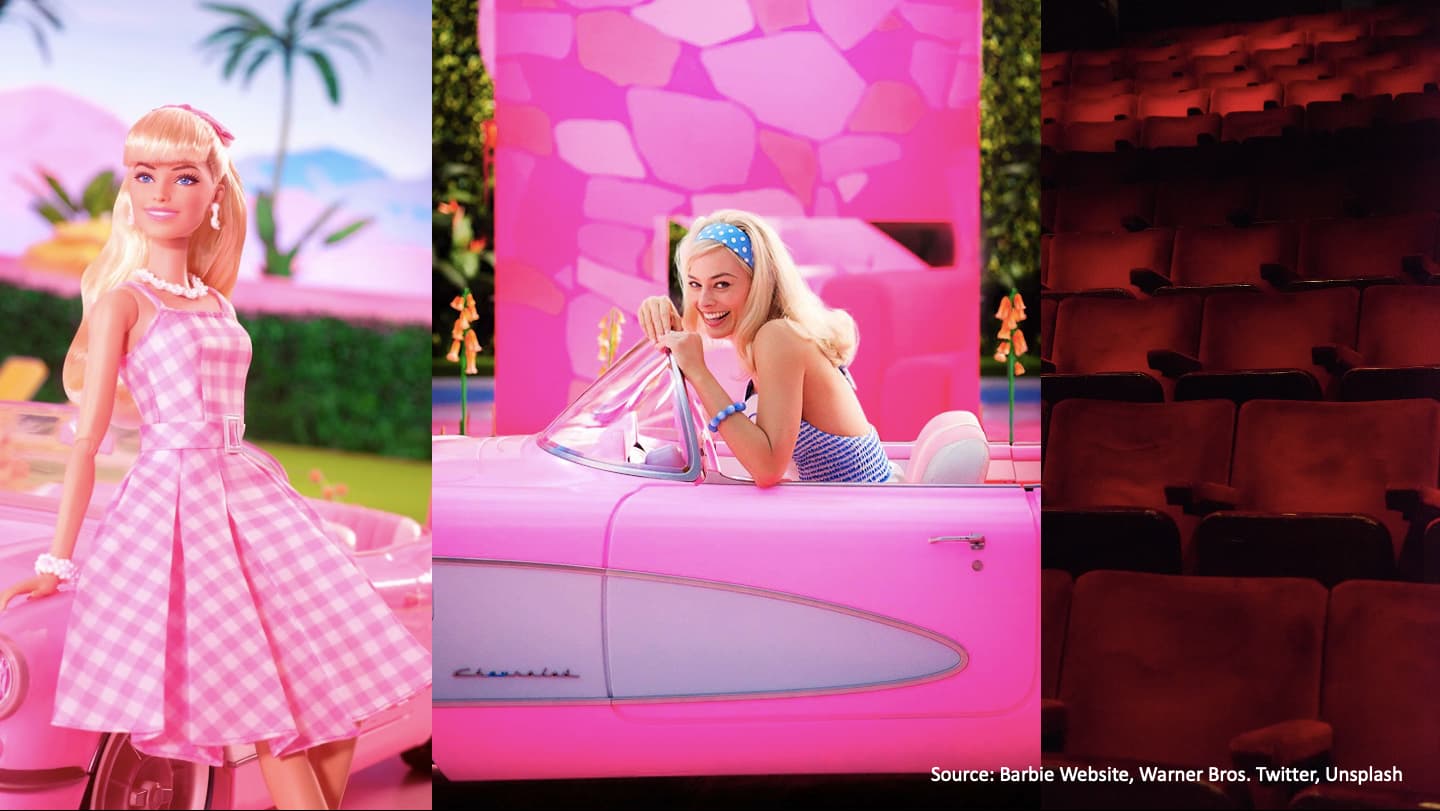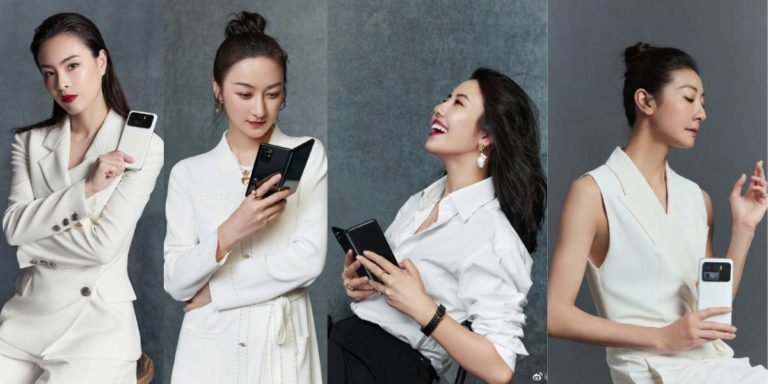Barbie is an iconic and globally recognized toy created by the American toy company Mattel. The American toy firm Mattel produced the iconic and well-known Barbie. Since her debut in 1959, Barbie has evolved into much more than a mere doll; she has become a cultural phenomenon and a representation of play, fashion, and imagination. This year, in its 64th year since inception, the highly anticipated “Barbie” movie debuted on July 21st to an electrifying frenzy. Boasting an A-list ensemble including Margot Robbie, Ryan Gosling, and Will Ferrell, and is directed by three-time academy award nominee, Greta Gerwig. The film garnered a staggering US$337 million globally in its opening weekend alone. The movie’s allure has also reached China, attracting tons of excited viewers to theaters and turning Barbie into a trend.
Read about the She economy in China

Mattel’s evolution: From picture frames to iconic toys
Founded in 1945 by Harold “Matt” Matson and Elliot Handler, Mattel, Inc initially started as a picture frame manufacturing company before venturing into the toy industry. This strategic shift propelled Mattel to become one of the globe’s premier and renowned toy corporations. The company’s early triumphs included the launch of the “Uke-A-Doodle,” a musical toy, and the “Bar-Zim,” a cowboy doll, setting the stage for its future endeavors.
Throughout its history, Mattel has crafted a diverse portfolio of renowned brands. Among them is Barbie, an emblematic doll introduced in 1959, which swiftly soared to cultural prominence and became an enduring symbol in the toy realm. Adapting to evolving trends and societal shifts, Barbie maintains her allure across generations. For instance, Barbie has expanded her range of careers and roles, such as President Barbie, reflecting the growing emphasis on female empowerment and diversity. Her collaboration with influential figures like fashion designers and celebrities keeps her relevant in the ever-changing world of pop culture. Furthermore, Barbie’s recent move towards sustainability and inclusivity, with lines like the “Barbie Fashionistas” featuring diverse body types and skin tones, showcases the commitment to staying current and appealing to a broader audience.

Barbie in China: The odyssey of localization attempts and challenges
Barbie’s journey into Asia began as far back as the 1960s, with dolls bearing the label “Made in Hong Kong” being distributed worldwide. Progressing into the 1990s, Mattel established its foothold in China by setting up manufacturing plants. Notably, in July 1997, the company committed to constructing a wholly-owned manufacturing facility in the southern Chinese region of Guangzhou, with production commencing in 1999. This expansion was a significant moment for Mattel’s toy line, including Barbie, in China. However, the products made in these factories were mainly meant for selling in other countries rather than directly in China.
With the decrease in sales in the United States since the early 2000s, Mattel moved its vision internationally for growth, specifically in China. On 6th March 2009, Mattel officially opened its first-ever Barbie flagship store in the chic Huaihai Road in Shanghai.
In response to declining US sales since the early 2000s, Mattel pursued international growth, particularly in China by opening the first Barbie flagship store on March 6, 2009 on Shanghai’s stylish Huaihai Road. The six-story, 3,300 square meter store proudly presented the globe’s most extensive assembly of Barbie dolls and related merchandise while also featuring a diverse range of services and experiences, including a spa, cafe, design studio, and fashion stage. The strategic choice of Shanghai as the store’s hub was intentional as the city represents a cosmopolitan and forward-looking city.

Barbie’s pursuit of localization, tailoring to local tastes
The “Oriental Barbie” released in 1981 signifies the first Asian Doll in the Barbie brand. Since then, Mattel has launched various Barbies that would be more relatable for consumers in Asia. Recognizing the importance of resonating with Chinese consumers, Mattel has since collaborated with local designers and brands to craft special editions of Barbie dolls. As an example, in 2022, Mattel collaborated with Chinese designer Guo Pei to design a Chinese Lunar New Year Barbie. Clad in an intricate Chinese red dress with symbolic phoenixes, the doll harmonizes Guo Pei’s craft with tradition.

The clash of cultural aesthetics of Barbie in China
The introduction of the iconic American toy, Barbie, into China is not without its share of controversy, particularly evident in the short-lived existence of the Barbie flagship store in Shanghai, which closed just two years after its 2009 opening. One primary challenge was Barbie’s limited cultural resonance in China, failing to evolve into a lifestyle symbol as it had in the West. The doll’s premium pricing positioned it as a luxury product, appealing primarily to wealthier consumers. However, local parents in Shanghai prioritized investing in education, opting for tutoring and books over toy purchases.
The store faced further setbacks as the clothing offered was criticized for both high prices and low quality, not aligning with the preference for “cute” aesthetics over “sexy” ones. In contrast, Japanese brands like Hello Kitty successfully established themselves as “cute” lifestyle icons in the Chinese market. Moreover, the flagship store’s location on Huaihai Road, known for luxury brands, clashed with Barbie’s essence. Activities such as Fashion Runaway and Design Center were conducted primarily in English rather than Chinese hindered effective communication and engagement.
Barbie in China: Breaking down the movie’s success
While the Barbie doll’s popularity in China might have been lackluster, the reception of its 2023 movie paints a different story. In a market largely dominated by domestically produced films with nationalist themes, the American film “Barbie” achieved remarkable success by earning around US$8.1 million (RMB58.4 million) during its opening weekend from July 21 to 23. This achievement placed it fifth in the country’s box office rankings. The movie’s success story continued into the following week, adding another US$7.2 million (RMB 51.9 million) through its second weekend run. Additionally, merely a day after hitting the screens on July 22nd, the movie garnered exceptional ratings across various well-known Chinese movie review platforms: 8.8 on Douban, 9.3 on Tao Piao Piao, and an impressive 9.4 on Maoyan.
While not generating the same level of fervor seen in the US, Barbie in China has sparked a small-scale frenzy in certain communities. Moviegoers are sharing snapshots of themselves clad in pink attire or exhibiting gleaming souvenir tickets, reflecting the movie’s impact in China.
Barbie in China sparked gender equality dialogues and inspired Barbiecore
In a country where feminism has faced challenges due to censorship and societal norms, Barbie in China emerges as a catalyst igniting essential dialogues on gender equality. The film’s depiction of feminism, patriarchy, and toxic masculinity resonates deeply with Chinese audiences, predominantly among the younger generation. Barbie’s movie offers a refreshing outlook that challenges gender norms, inspiring Chinese women to defy societal expectations and embrace empowerment with renewed determination.
The film’s focus on female strength and its view on beauty ideals resonate with Chinese women’s evolving desires, sparking interest in the ‘Barbiecore’ trend. Barbiecore stands for celebrating individuality and empowerment, capturing a sense of defiance against societal norms. Taobao reported a surge of over 760% in average daily searches for Barbie-related terms from July 21 to July 26, compared to the previous week. Furthermore, searches for ‘Barbiecore outfits’ (芭比风穿搭) skyrocketed by 1,146%, and queries for official co-branded Barbie products surged by more than 800% within the same timeframe.

MINISO embracing the Barbiecore trend
The Chinese lifestyle brand MINISO capitalized on the Barbie IP ahead of the film’s release on July 21st, creating an immersive Barbie experience at its Changsha flagship store. The collaboration involved an exclusive range of Barbie-themed accessories and stationery, creating a Barbie mecca. The store’s vibrant setup included a giant Barbie magazine and an entrance adorned with sparkling archways, immersing visitors in a world of Barbie-inspired aesthetics.
The campaign resonated with the rising ‘Barbiecore’ trend and celebrated individuality, while also tapping into China’s ‘dopamine dressing’ (多巴胺穿搭) phenomenon, a fashion trend characterized by brightly colored clothing that seeks to evoke feelings of joy, positivity, and self-expression. This MINISO x Barbie collaboration became a hit in China, gaining significant attention on Chinese social media.

Beyond the screen: “Barbie” influences relationships and values in China
- Evolving from dolls manufactured in Hong Kong during the 1960s to establishing production facilities in China in the 1990s, Mattel aimed to penetrate the Chinese market. However, the short-lived Barbie flagship store in Shanghai encountered obstacles due to limited cultural resonance and premium pricing.
- “Barbie” film achieved impressive box office triumph in China, amassing US$8.1 million during its opening weekend and maintaining strong earnings into the following week.
- The movie ignited crucial dialogues on gender equality and women’s rights within a challenging context of censorship and societal norms.
- The film spurred the emergence of the ‘Barbiecore’ trend, symbolizing defiance of societal norms and a celebration of uniqueness.
- Tapping into ‘Barbiecore’ trend and China’s ‘dopamine dressing’ phenomenon, MINISO’s collaboration with Barbie achieve success.
Author: Regina Sukwanto





